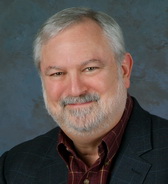 |
Dave
Crocker's Personal Web Page |
||
David H. Crocker is a principal with Brandenburg InternetWorking. He has contributed to the development of internetworking capabilities for more than forty-five years, first as part of the Arpanet research community and then in the commercial sector.
Mr. Crocker's curriculum vitae is also available.
|
||||
Professional Efforts |
|
|||
Personal Efforts |
|
|||
|
||||
Gender Neutral |
Use "they" instead of he/she Third-person gender neutrality writing is not improved with he/she — quite the opposite. Consider:
Note:
|
|||
Costs of Progress |
From "Inherit the Wind"
|
|||
Eight
Fallacies of |
Essentially everyone, when they first build a distributed application, makes the following eight assumptions. All prove to be false in the long run and all cause big trouble and painful learning experiences.
|
|||
The Beginning of the Web |
A quarter of a century before it was invented in 1989:
"The mother of all demos" -- On December 9, 1968, Douglas C. Engelbart and the group of 17 researchers working with him in the Augmentation Research Center at Stanford Research Institute in Menlo Park, CA, presented a 90-minute live public demonstration of the online system, NLS, they had been working on since 1962. |
|||
No One Could Have Predicted How the Internet Would Be Used |
Except the folks who started it...
It seems reasonable to envision, for a time 10 or 15 years hence, a "thinking center" that will incorporate the functions of present-day libraries together with anticipated advances in information storage and retrieval and the symbiotic functions suggested earlier in this paper. The picture readily enlarges itself into a network of such centers, connected to one another by wide-band communication lines and to individual users by leased-wire services.
Face to face through a computer At a project meeting held through a computer, you can thumb through the speaker’s primary data without interrupting him to substantiate or explain. On-line interactive communities Available within the network will be functions and services to which you subscribe on a regular basis and others that you call for when you need them. In the former group will be investment guidance, tax counseling, selective dissemination of information in your field of specialization, announcement of cultural, sport, and entertainment events that fit your interests, etc. In the latter group will be dictionaries, encyclopedias, indexes, catalogues, editing programs, teaching programs, testing programs, programming systems, data bases, and—most important—communication, display, and modeling programs. ... What will on-line interactive communities be like? In most fields they will consist of geographically separated members, sometimes grouped in small clusters and sometimes working individually. They will be communities not of common location, but of common interest. In each field, the overall community of interest will be large enough to support a comprehensive system of field-oriented programs and data. ... You will not send a letter or a telegram; you will simply identify the people whose files should be linked to yours and the parts to which they should be linked-and perhaps specify a coefficient of urgency. You will seldom make a telephone call; you will ask the network to link your consoles together. |
|||
Agreement |
If we are all in agreement on the decision - then I propose we postpone further discussion of this matter until our next meeting to give ourselves time to develop disagreement and perhaps gain some understanding of what the decision is all about. |
|||
Email History |
This email service you use today has an historical arc, dating back to roughly 1965, with its ability to travel between machines starting at the end of 1971. Most astonishing is that an Arpanet email message sent in the mid-1970s has almost exactly the same technical core format and components as an email sent today! For a timeline and a range of historical accountings, see: emailhistory.org. |
Email Invention 'Controversy' |
In 2012, the long-standing email technical community was surprised to discover that there was claimed to be some controversy about its origin. This prompted quite a bit of community activity, discussing both the actual history and the supposed controversy. Excellent research and reporting work followed.
Here are some notable examples: |
|